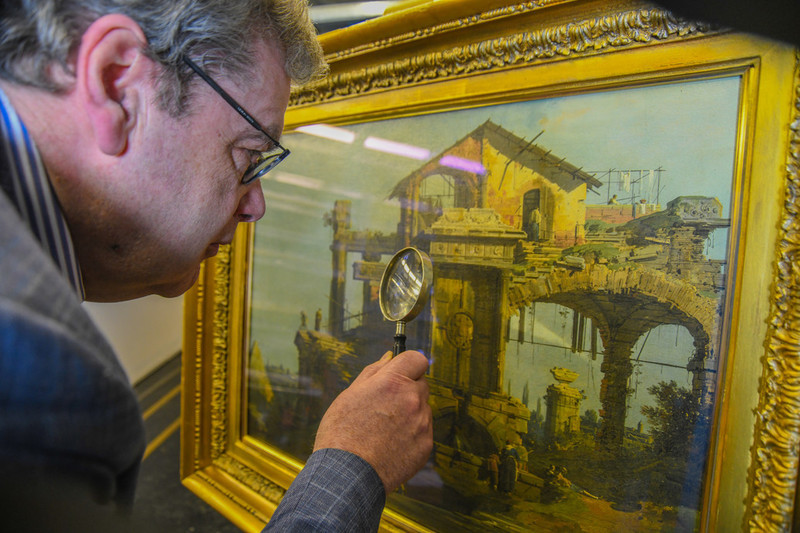The discovery of the pictures

The Capriccio with Roman Ruins was usually regarded as being a work by an artist of Canaletto’s school of painting rather than by Canaletto himself, along with another work in the University, the View of the Grand Canal with S. Simeone Piccolo and the Scalzi. However, John Gash of the History of Art Department, University of Aberdeen, suspected that the considerably higher quality of the Capriccio suggested that it had been painted by Canaletto himself. He consulted two outside specialists, Charles Beddington and Francis Russell, both of whom were able to confirm that the Capriccio is indeed not only an original, but one which shows the painter at the height of his powers.
The decisive evidence which distinguished the painting from those of Canaletto’s imitators was the quality of detail in the architectural drawing and texture, the free but assured rendering of the figures, and the impressionistic but beautifully controlled landscape. The design of the picture draws on the series of etchings made by Canaletto in the early 1740s. The University has recently acquired the most famous of these, The Portico with the Lantern. Both the Capriccio and this etching include an escutcheon with the chevron of Canaletto’s coat of arms, clearly used in place of a signature.
It has also been proposed that the View of the Grand Canal, a copy with variations of an original by Canaletto, was done by Canaletto’s father, Bernardo, who assisted his son in this way.
The research is published in an article by John Gash and Charles Beddington in the December 2017 issue of The Burlington Magazine.

